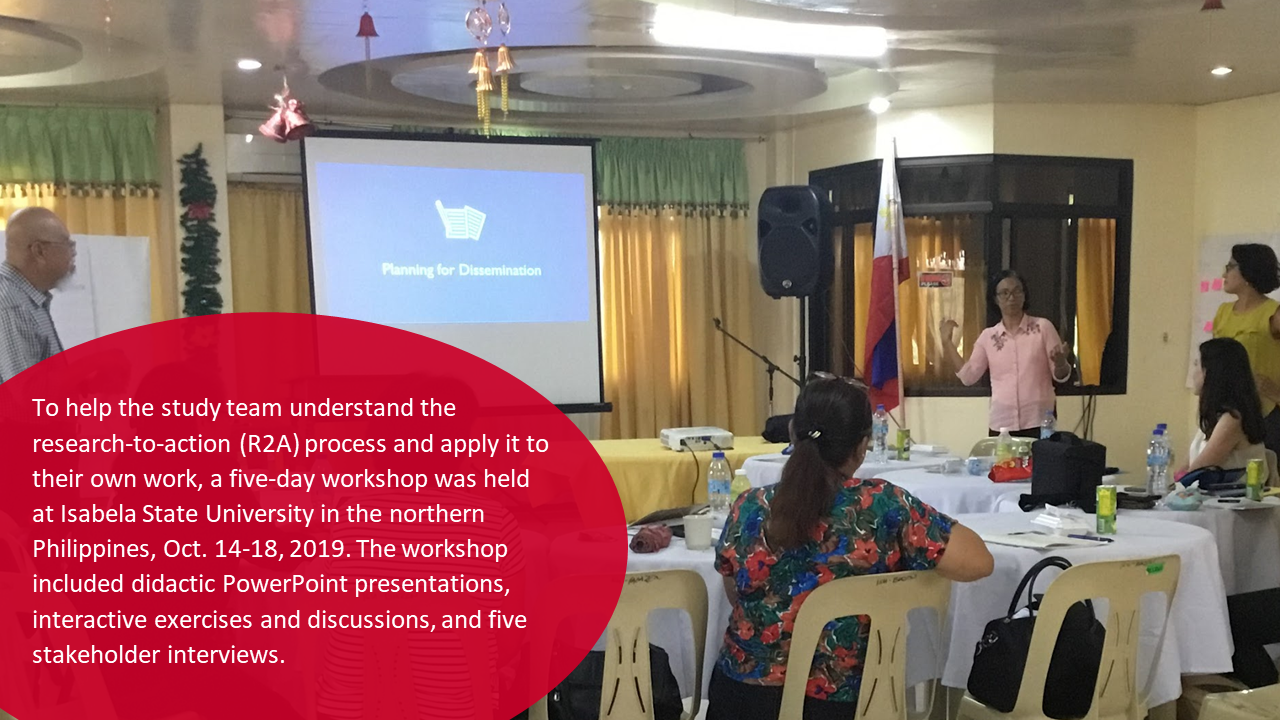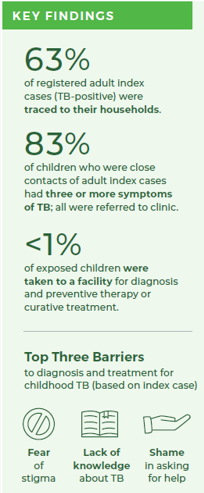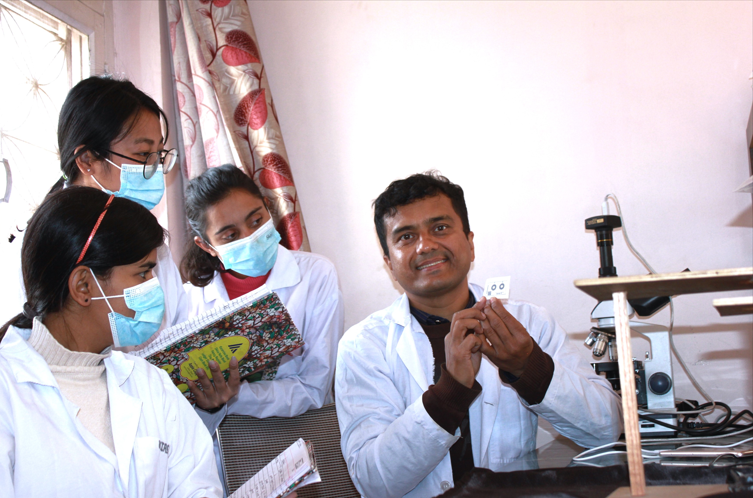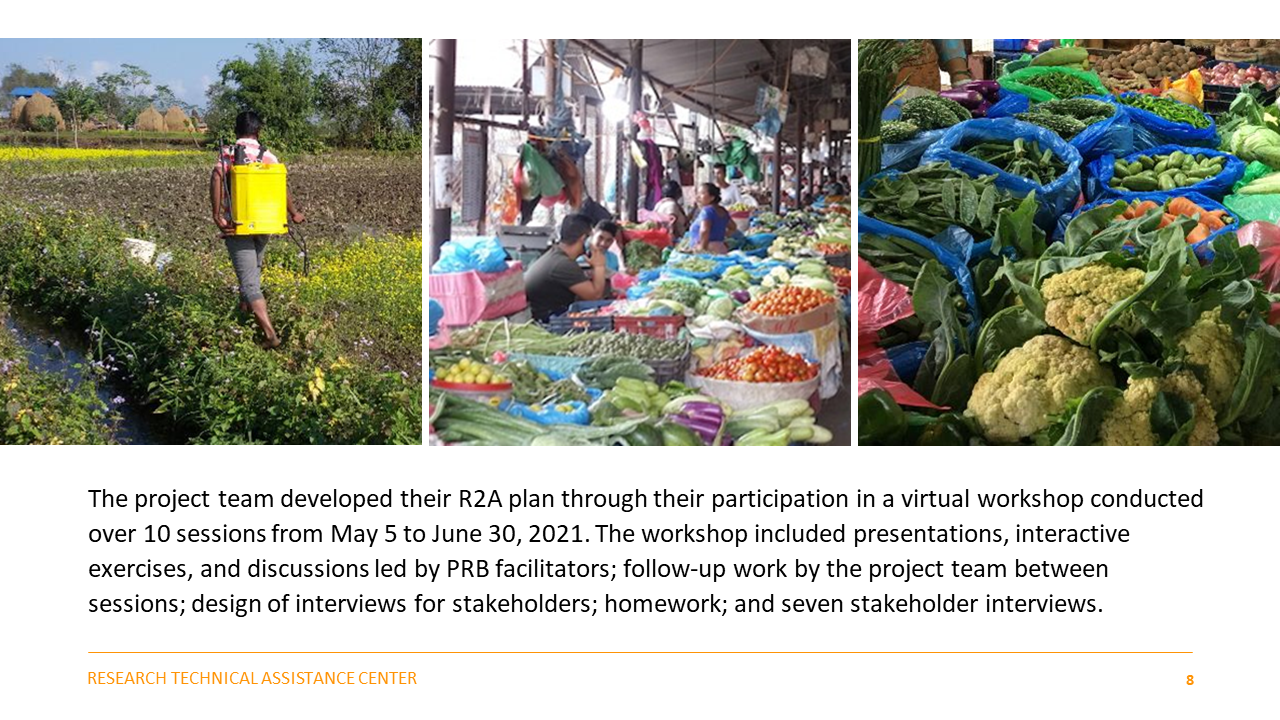USAID’s Research-to-Action Process: Increasing Impact of Childhood Tuberculosis and Pesticide Research
USAID is committed to evidence-based decision making, but how does a scientific question turn into policy change? Translation is what makes research truly transformative: moving findings from technical journal articles to products easily understood and accessed by those who can make policy decisions. Each part of the research ecosystem—generation, translation, and use of evidence—is vital for furthering the work of international development professionals and organizations.
However, the progression from research generation to translation is not always straightforward—as experienced firsthand by Ms. Flordeliza Bassiag and her research team.
With USAID support, they identified barriers to childhood tuberculosis (TB) diagnosis and treatment in the rural Northern Philippines. But how could the team members go one step further to increase detection of one of the world’s deadliest diseases in children?
In October 2019, Bassiag, a scientist at Isabela State University in the Philippines, participated in a Research-to-Action (R2A) workshop, which was implemented by the USAID-funded Research Technical Assistance Center (RTAC). The R2A process bridges the gap between evidence generation and research use, and, by doing so, helps ensure the lasting impact of USAID’s research investments. Through the R2A process, USAID trains, supports, and guides research teams to develop strategic blueprints for how their research can and will be used. Using the R2A process, Bassiag’s research team developed an extensive plan for turning their discovery of consistent under-detection and undertreatment of childhood TB into action at national, regional, provincial, and municipal levels.


Bassiag and team had long hoped provincial, municipal, and city governments would enact improved TB policies, and the R2A process provided the framework and guidance for government engagement. The research team drafted a youth-focused ordinance on TB to serve as an example for provinces, municipalities, and cities. As of 2023, multiple Philippine provinces, municipalities, and cities have enacted or are actively working on enacting policies based on the research team’s draft. This is an encouraging development in increasing childhood TB diagnoses in rural areas.
Since their inception in 2019, ten R2A plans have been developed through RTAC. The hallmark aspect of the process is a roughly 16-hour workshop, in which RTAC consortium member Population Reference Bureau (PRB) guides selected research teams in developing tailored plans for translating their findings into policy and programmatic action. The Research Division in USAID’s Innovation, Technology, and Research Hub has undertaken efforts to expand access to this R2A process beyond the research teams accepted for the PRB workshops. The Research Division and PRB have trained USAID staff across the Agency in the R2A planning process and in how to facilitate R2A workshops.
An R2A workshop involves: 1) articulating goals for research use, 2) targeting key stakeholders, 3) crafting context-appropriate policy and/or program recommendations for implementing or incorporating research results, and 4) creating a feasible dissemination strategy. Each R2A workshop results in an R2A Plan, which is considered a living document. When USAID’s direct support ends, research teams independently implement the plan that they co-created with USAID. For teams without the opportunity to take part in a workshop, PRB and USAID have produced a publicly available guide on making an R2A plan.
Dr. Basant Giri, at the Kathmandu Institute of Applied Sciences in Nepal, also participated in an R2A workshop as he sought to increase use of the technology he developed to detect pesticides on produce. Through meetings with stakeholders that the R2A workshop helped identify, Giri and his team members discovered the nuances and complexities of the government certification process, ministry consultations, and private sector investment. The team visited government research labs, initiated a comparison with the government’s pesticide-detecting technology, and aimed to train government technicians in their method. They also integrated stakeholders’ perspectives and involved stakeholders in their subsequent research.

In follow-up conversations with USAID, Giri shared that his approach to research has changed as a result of the R2A Process: “I now focus more on the application part of my research. More frequent engagement with stakeholders changed compared with before the workshop.”
USAID’s R2A training has broadened Giri’s research focus and goals to include how to take his research public. He shared that he and his colleagues now discuss both how their research will help people and how they can create a market for its use.

In reflecting on the R2A process, Bassiag noted that the workshop’s lessons, particularly how research outputs were integrated throughout the research process, changed how she and her team conduct research. The R2A process’s foundation of organization and strategic planning not only fundamentally shifts the way scientists conduct their research in areas like global health, food security, and agriculture, but it also increases the impact of that research on people and their communities around the world.




